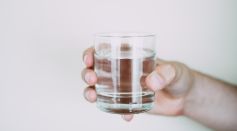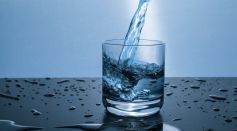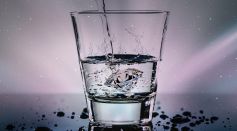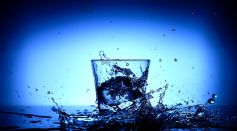Tags: Drinking water

Nitrogen Pollution Could Affect One-Third of Global River Basins, Threatens Security of US Drinking Water

Drinking Tap Water: Is It Safe? How Can You Test Its Safety, Cleanliness?

Strict Limits on Toxic ‘Forever Chemicals’ Proposed by Experts, UK To Tighten Drinking Water Standards

Can Drinking Lots of Water Lower Blood Pressure? How Does Dehydration Affect Hypertension?
Artificial Intelligence Used in High-Performance Graphene Sensor Detects Bacteria and Toxins in Drinking Water

Plant-Based Organic Device Called 'bioCap' Can Filter 99.9% of Microplastics From Drinking Water, Experts Say

Families Are Given the Go Signal to Drink Tap Water That Becomes Brown

Is Drinking Eight Cups of Water Daily Really Necessary?

Drinking Water on an Empty Stomach: 5 Reasons to Drink in the Morning Before Starting Your Day

This Tiny New Gel Film Can Squeeze Out 13 Liters of Drinking Water from Thin Air Each Day

Japan Develops Fluorine-Based Nanomembrane for Quick, Efficient Water Desalination

Suitcase-Sized Device Turns Seawater Drinkable by 0.3 Liters Per Hour; Cleansing Powered by 20 Watts Like Phone Charging

Solar Nanowire-Nanotube Filter May Help Make Drinking Water More Accessible

Less-Toxic Approach to Eliminate Microplastics in Drinking and Wastewater Developed Through Okra

Solar Powered Desalination Device Could Solve Drinking Water Crisis

Chemical Compounds Found in Drinking Water Known To Cause Cancer, Heart Disease, Other Conditions Could Be Removed Using New Technology

Cow Manure Turned Into Filter to Make Drinking Water from Seawater

Scientists Found Nearly 42,000 Toxic 'Forever' Chemicals That Could Contaminate Drinking Water
Time Magazine's First 'Kid of the Year' Is a 15-Year-Old Inventor From Colorado

NOAA Grants Ohio Researchers $1.1M To Develop Global Solution for Filtering Freshwater
Most Popular

Starlink Satellite Explodes in Orbit; SpaceX Confirms It'll Re-Enter Earth

Aurora Phenomenon: How Geomagnetic Storms and Space Weather Are Lighting Up the World

What Causes Monsoons? How Seasonal Winds Shifts and Climate Patterns Drive Rainfall

Ocean Warming Explained: Why Climate Science Shows Sea Temperature Rise Is Speeding Up





